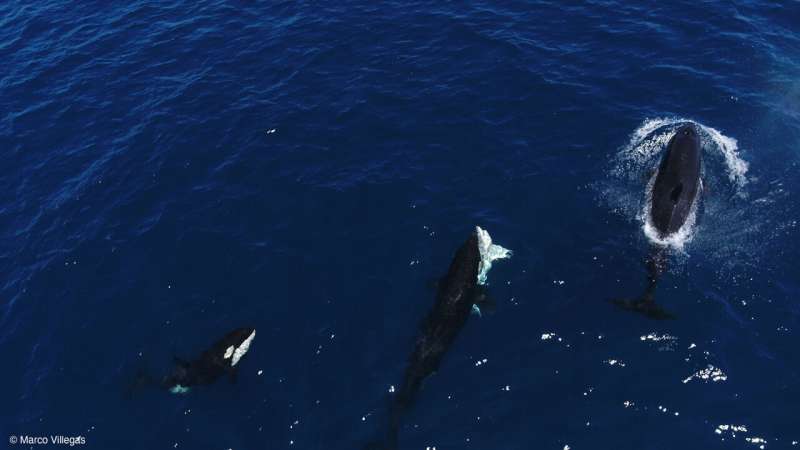A specialized pod of orcas, referred to as **Moctezuma’s pod**, has been documented hunting young great white sharks in the **Gulf of California**. The orcas have been seen flipping the sharks upside down to access their nutrient-rich livers, highlighting a sophisticated hunting strategy that may be influenced by changing marine environments.
In a detailed study published in **Frontiers in Marine Science**, researchers observed two instances of these orcas targeting juvenile white sharks, which are less capable of evading predators compared to their adult counterparts. The first recorded hunt took place in **August 2020**, where five orcas successfully pursued and incapacitated a juvenile shark. They flipped it onto its back, inducing a state known as tonic immobility, which rendered the shark defenseless while they extracted its liver. A second hunt, occurring in **August 2022**, followed a similar pattern.
According to **Erick Higuera Rivas**, a marine biologist and lead author of the study, this behavior illustrates the orcas’ advanced intelligence and strategic hunting techniques. He noted, “Orcas that eat elasmobranchs—sharks and rays—could eat a great white shark if they wanted to, anywhere they went looking for one.”
The research team was able to identify the individual orcas involved in the hunts based on unique markings on their dorsal fins. During the hunts, the orcas demonstrated teamwork and coordination, suggesting the passing down of hunting techniques through generations within the pod.
Changing Marine Dynamics
The phenomenon of orcas hunting juvenile white sharks raises questions about the broader ecological implications in the region. Recent climate events, such as **El Niño**, have been linked to alterations in the distribution of white shark nursery areas, potentially increasing the presence of juvenile sharks in the Gulf of California. These changes may leave them more vulnerable to predation by orcas.
**Dr. Salvador Jorgensen**, a co-author of the study from **California State University**, pointed out that adult white sharks tend to flee from orca encounters, often abandoning their seasonal habitats for extended periods. In contrast, juvenile sharks may not yet have developed the instincts to evade such predators. “We just don’t know yet whether white shark anti-predator flight responses are instinctual or need to be learned,” Jorgensen stated.
The findings suggest that the Moctezuma pod may be capitalizing on the increased availability of juvenile white sharks. As the region’s marine ecosystem continues to shift, understanding the orcas’ hunting behavior could become crucial for conservation efforts.
Future Research Directions
The researchers plan to conduct further surveys to gain a clearer understanding of the orcas’ diet and hunting patterns in relation to juvenile white sharks. **Dr. Francesca Pancaldi**, a co-author from the **Instituto Politécnico Nacional Centro Interdisciplinario de Ciencias Marinas**, emphasized the need for more comprehensive data. “Generating information about the extraordinary feeding behavior of killer whales in this region will lead us to understand where their main critical habitats are,” she explained.
While the study provides groundbreaking insights into orca behavior, it also highlights the challenges of conducting fieldwork in unpredictable marine environments. The researchers aim to determine whether these hunts are a regular occurrence or if they are opportunistic events linked to the availability of juvenile sharks.
As marine ecosystems continue to evolve, the interactions between predator and prey in the Gulf of California will be essential to monitor, both for scientific understanding and for the development of effective management strategies to mitigate human impact on these species. The ongoing research aims to contribute to broader conservation initiatives that protect vulnerable marine life in the region.
